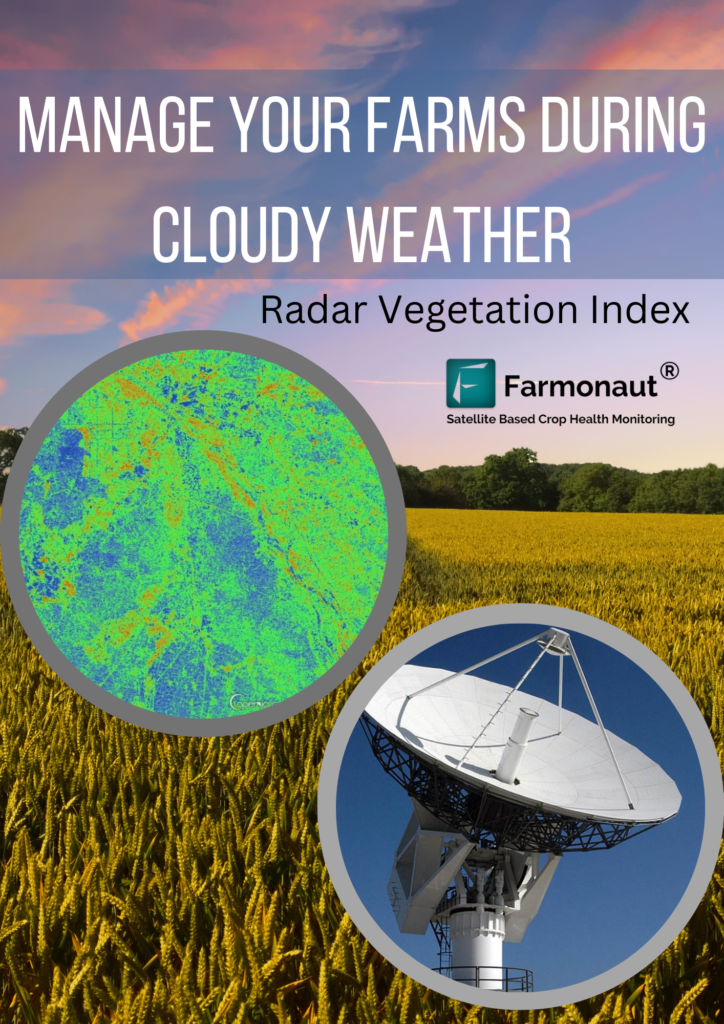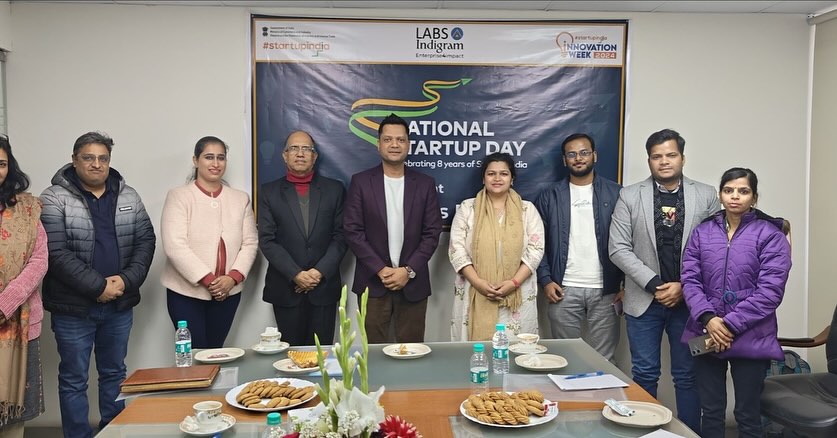How to Protect Plants from Frost: 7 Tricks Farmers Swear By
“Frost-resistant crop varieties can reduce yield losses by up to 40% during unexpected cold snaps.”
Summary: Protecting Plants from Frost — Essential Strategies for Agriculture, Farming, and Forestry
Frost poses a persistent risk to our plants, threatening yields, plant health, and our sustainable agriculture ambitions, especially during sudden cold snaps. By understanding how frost forms and learning the best frost protection for plants, we strengthen the resilience of our farms and forests. In this comprehensive guide, we take an in-depth look at practical and innovative strategies for frost damage prevention in agriculture and forestry—from selecting the right frost-resistant plant varieties and optimizing planting and harvesting dates to deploying frost monitoring systems and leveraging state-of-the-art agricultural technology like Farmonaut.
Understanding Frost and Its Impact on Plants and Crops
Frost forms when air temperature drops below 0°C (32°F), enabling ice to develop on exposed surfaces due to condensation and subsequent freezing of atmospheric water vapor. This ice formation is particularly harmful for delicate plant tissues. Severity factors include plant species, the growth stage of the crop, exposure duration, the type of frost (radiation or advection), and ambient moisture levels.
- Direct tissue damage: Ice crystals rupture plant cell walls, often causing tissue translucence, blackening, or wilting.
- Yield loss and stunted growth: Prolonged or repeated frost leads to reduced yield, delayed maturation, and in severe cases, plant death.
- Long-term forestry impacts: In forests, recurrent frost events can hinder regeneration, cause dieback in young trees, and disrupt ecosystem balance.
Key takeaway: Early intervention using strategic frost protection techniques for farmers and foresters is essential to minimize the impact of frost on plant health, productivity, and ecosystem resilience.
Selecting Frost-Resistant Plant Varieties
Choosing the right frost-resistant plant varieties is the first line of defense in frost damage prevention in agriculture and forestry. Plant breeders develop cultivars—specific species and crop lines—exhibiting greater cold tolerance at vital growth stages.
- Cultivar adaptation: For example, certain apple cultivars withstand late spring frosts better than others, and cereal grains like rye and barley often demonstrate higher cold resistance than maize.
- Region-specific recommendations: Collaborate with local agricultural extension services and plant experts to identify cultivars suited for your specific regions and micro-climates. Selecting suitable varieties helps reduce risk of crop and forestry losses.
- Forestry species selection: For frost-prone forests, choosing tree species with proven winter hardiness (for example, spruce or birch over sensitive eucalyptus in cold climates) is vital.
Our recommendation: Conduct trials on-farm, compare performance, and consult regionally appropriate variety lists for crops and trees.
Timing Planting and Harvesting for Frost Protection
Optimal timing for planting and harvesting is a cornerstone of frost risk management. To minimize exposure during high-risk periods, we should strategically align crop schedules with local climate data and historic frost dates.
- Delayed planting: In regions with late spring frosts, wait until the last average frost date has passed.
- Accelerated harvest: For crops maturing close to the first autumn frost date, advance harvest to avoid late-season damage.
- Utilize weather data: Leverage accurate weather forecasts and frost monitoring systems (like those provided by Farmonaut via satellite API data) to fine-tune farm operations.
- Stagger plantings: For market gardens, nurseries, and forestry projects, stagger sowing to diversify risk and protect a greater percentage of plants.
Key action: Always adjust planting and harvesting schedules based on the latest weather strategies for frost risk and local climate models—reacting quickly can be a make-or-break difference.

Implementing Frost Protection Techniques for Farmers and Foresters
There are a range of frost protection techniques for farmers designed for different operational scales, crop types, and climates—blending both traditional and modern methods:
- Row Covers (Floating Row Cover, Frost Cloth): Lightweight, breathable fabric placed over crops at night trapping ground heat and creating a microclimate. Suitable for vegetable beds, nurseries, and young field crops.
- Mulching: Organic materials—such as straw, wood chips, or leaves—spread at the base of plants or in tree orchards to insulate the soil and roots, reducing temperature fluctuations and limiting ice formation.
- Windbreaks: Rows of trees, tall shrubs, or man-made barriers that reduce wind speed, minimizing convective heat loss and decreasing the frost risk for crops, orchards, and forestry saplings.
- Frost Blankets and Insulated Tunnels: Covers and high tunnels provide enhanced protection to high-value crops and young plantings; tunnels also extend the growing season.
- Greenhouses: Controlled environments protect sensitive species, allow temperature regulation, and reduce cold air exposure.
For details on how to combine these methods with digital monitoring, check out the Farmonaut satellite-based management app—it offers real-time soil and crop health insights, enhancing the effectiveness of every intervention: Learn more about Large-Scale Farm Management & Advisory.
“Infrared thermometers detect plant surface temperature changes within 0.5°C, enabling precise frost damage prevention.”
Irrigation and Frost Management: Best Practices
Irrigation and frost management are intimately connected, but must be approached with care:
- Soil moisture as heat reservoir: Moist soil absorbs more solar energy during the day and releases it at night, raising nearby air temperature slightly and providing some protection against light frost.
- Timing matters: We recommend irrigating in the afternoon before an expected frost, as wet soil will conduct heat better than dry soil.
- Avoid leaf wetness overnight: Surface water can freeze on plant tissues, worsening frost damage.
- Monitor moisture levels: Use remote moisture monitoring tools—like Farmonaut’s satellite imagery and soil analytics features (see the API for customized monitoring)—to avoid over-irrigation and optimize timing.
Key takeaway: Strategic irrigation paired with advanced soil moisture measurement helps balance frost protection and plant health.
Monitoring Weather Forecasts & Frost Monitoring Systems
Accurate weather and real-time monitoring are critical components of effective frost protection for plants:
- Access hyperlocal data: Use online weather portals, regional weather stations, or smart apps. Farmonaut’s API Developer Documentation details how to integrate satellite weather data directly into your farm system, enabling automation.
- Set frost alerts: Automate SMS or app-based notifications when temperatures near critical thresholds.
- Deploy frost monitoring systems: Infrared thermometers, data loggers, and weather sensors can be used to monitor plant and soil temperatures, and can trigger protective measures such as irrigation or deployment of covers.
The Farmonaut platform allows us to monitor crop health, temperature, and moisture in real-time, so we can react quickly—implementing weather strategies for frost risk that are data-driven and customized to our unique context.
Employing Heat Sources for Frost Damage Prevention
When extreme cold is forecasted, introducing artificial heat sources into the farm or orchard can prevent critical frost injury. Some of the top frost protection techniques for farmers include:
- Smudge Pots: Oil- or wood-fueled devices that produce heat and smoke, forming a protective layer to trap warmth near the ground. Common in orchards and vineyards.
- Heaters: Propane or electric greenhouse heaters keep air temperatures above freezing for high-value or sensitive crops. Useful in tunnels, seedling houses, and greenhouses.
- Hot Caps and Cloches: Small, portable hoods or containers placed over individual plants at night to capture heat. Effective for seedlings and young vegetable crops.
Recommendation: Only use heating when truly necessary due to cost and environmental impact. Consider integrating carbon footprint monitoring tools (like those from Farmonaut) to optimize interventions and keep your farm or forestry operation sustainable.
Pruning and Maintenance: Best Practices for Frost Resilience
Regular pruning and maintenance are vital to enhance a plant’s overall resilience:
- Remove dead and diseased wood: Eliminates spots likely to collect cold air and ice.
- Promote good air circulation: Keeps the microclimate more stable and reduces pockets of cold air.
- Encourage healthy root growth: Ensure plants are well-watered but not stressed prior to frost events. Healthy, established plants are generally more frost-tolerant.
- Apply post-frost care: After frost exposure, prune away damaged tissue promptly to prevent the spread of rot or secondary infections.
Important: Timely maintenance practices for both crops and trees can dramatically improve the effectiveness of other frost mitigation strategies and help with long-term health.
Educating and Training Agricultural Personnel in Frost Protection
Ensuring all team members—from field laborers to farm managers—understand frost risk and intervention strategies increases response speed and accuracy:
- Workshops: Conduct regular hands-on training for staff and new hires before and during the frost season.
- Standard Operating Procedures: Establish clear checklists for implementing frost mitigation measures.
- Leverage technology: Use mobile apps (like those from Farmonaut) to send real-time step-by-step frost action plans to field workers.
Tip: Education is especially crucial for forestry teams, who often manage large, remote areas where frost events can be highly localized.
Leveraging Technology and Innovation: Farmonaut for Frost Protection
The latest technology and innovation are revolutionizing frost mitigation in forestry and agriculture. Farmonaut empowers us with tools designed for both day-to-day management and extreme weather response.
- Satellite Crop and Soil Monitoring: Analyze soil moisture, plant health, and vegetation vitality in near-real time using multispectral satellite imagery. Respond rapidly to risk zones identified on the map.
- AI-Based Advisory System (Jeevn AI): Get tailored, AI-generated crop and forestry management recommendations—including frost protection for plants—specific to your farm.
- Automated Weather & Frost Alerts: Set up custom notifications for forecasted frost risk windows to make proactive decisions (available via mobile app, web, or API: Try now).
- Blockchain Traceability: After a frost event, document history and prove product authenticity using traceability solutions.
- Resource Optimization: Track vehicle fleets, manage labor, and oversee large areas remotely for efficient frost response (see Fleet Management Tools).
Farmonaut’s solutions are mobile-responsive, easy to access, and require no expensive on-site hardware. Scalable—from smallholder farms to vast forestry enterprises—for personalized frost damage prevention and resource allocation.
Our app, available on Android, iOS and browser, caters to farmers, agribusinesses, forest managers, and government agencies seeking affordable precision agriculture:
Download or Access the Farmonaut App here

Community Collaboration and Support in Frost Mitigation
Frost does not respect property boundaries—so collaborating with neighboring farms, forestry projects, and agri-cooperatives can dramatically increase resilience:
- Joint windbreaks and barriers: Pooling resources to plant community windbreaks can protect entire farm belts and rural zones.
- Shared technology: Use shared frost monitoring systems and irrigation resources to stretch budgets and increase coverage.
- Local alerts and response teams: Create neighborhood networks for rapid information sharing during severe frost events.
Comparative Table of Frost Protection Techniques
| Technique Name | Brief Description | Estimated Effectiveness (%) | Approximate Cost Range (USD/acre) | Required Technology/Equipment | Suitable Crop Types |
|---|---|---|---|---|---|
| Row Covers/Frost Cloth | Lightweight fabric to cover crops, trapping ground heat | 70-85% | $20–$60 | Fabric material, stakes | Vegetables, small fruits, seedlings |
| Mulching | Organic matter to insulate soil and plant bases | 50-70% | $15–$40 | Organic material | Trees, orchards, perennials |
| Windbreaks | Trees/shrubs planted to reduce wind speed | 60-80% | $25–$150 | Saplings, planting equipment | All field crops, orchards, forestry |
| Frost-Resistant Varieties | Selection of cultivars bred for cold tolerance | 40-60% (relative yield protection) | Minor additional seed cost | Selection guidance | Cereal grains, fruits, forestry saplings |
| Irrigation (Moist Soil) | Evening soil watering to retain ground heat | 30-50% | $10–$80 | Irrigation pipes, moisture monitoring | Row crops, orchards, nurseries |
| Greenhouses/Tunnels | Structures trapping heat, controlling environment | 80-95% | $200–$6,000 | Poly tunnels, greenhouse kits | Vegetables, nurseries, sensitive crops |
| Heaters/Smudge Pots | Direct heat in crops, smoke to slow heat loss | 70-90% | $75–$350 | Fuel-powered burners, heaters | Orchards, vineyards, high-value crops |
| Frost Monitoring Tech | Sensors, alerts, satellite-based weather monitoring | 70-95% (proactive interventions) | $20–$200+ | Sensors, smartphones, API access | All crop and forestry types |
Frequently Asked Questions (FAQs) on Frost Protection for Plants and Crops
What are the most effective ways to protect plants from frost?
Combining frost-resistant varieties, timely planting/harvesting, row covers, mulching, windbreaks, and leveraging advanced weather and frost monitoring systems like those from Farmonaut yields strong protection. For high-value crops, tunnels and heaters help minimize frost damage.
How do I choose suitable frost-resistant varieties for my region?
Consult with local agriculture extension services or seed advisors for recommended cultivars best suited to your region’s climate and historic frost risk. Field tests and satellite health monitoring via Farmonaut can help assess variety performance as well.
What role does soil moisture play in frost damage prevention?
Properly managed soil moisture helps store more daytime heat, which is gradually released overnight. Use remote soil moisture monitoring (like Farmonaut’s satellite analytics) to optimize irrigation, avoiding both under- and over-watering.
Why is weather monitoring critical for frost mitigation in agriculture and forestry?
Frost events can be highly localized and unpredictable. Monitoring changing weather and microclimate using sensors, weather data APIs, or real-time satellite-based apps helps anticipate risk and implement rapid, data-backed protective measures.
How can technology help with frost damage prevention on large farms or in forestry?
Platforms like Farmonaut integrate satellite-based monitoring, AI-driven advisories, weather alerts, resource management, and traceability. These support scalable, affordable, and data-rich frost protection for both agriculture and forestry enterprises.
Farmonaut: Flexible Subscription Plans for Affordable Precision Agriculture & Frost Monitoring
Access satellite-based crop health, soil moisture, weather forecasting, and more on demand.
Conclusion: Achieving Year-Round Frost Protection for Healthy Yields
Frost protection for plants and crops is foundational to maintaining productivity, farm profitability, and sustainable forestry. As our climate shifts, unexpected cold snaps become increasingly common. By fusing traditional protective measures (row covers, mulch, windbreaks, and choosing the right cultivars) with cutting-edge technology (real-time monitoring, AI-based advisories, predictive frost monitoring systems), we can strategically reduce frost risk and protect our investment in agriculture and forestry.
Farmonaut leads this evolution in precision agriculture, giving every farmer and forester affordable, actionable insights for frost damage prevention and resource optimization. We invite you to explore its mobile and web solutions, and visit the Farmonaut API page for seamless integration into your management systems.
Let’s future-proof our fields and forests through best practices for frost resilience—harvesting healthy yields, minimizing losses, and nurturing our landscapes for generations to come!















